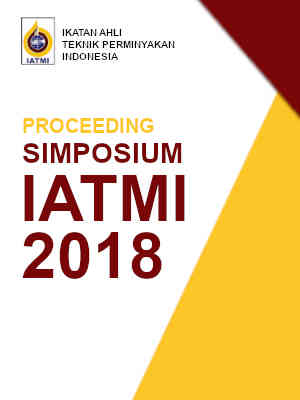Successful Novel Fit-For-Purpose Real Time Survey Tool Application For Drilling Exploration Well In South Sumatra
Keywords:
Vertical Well, BHA Tendencies, Real-Time SurveyAbstract
CPK-1 is a vertical exploration well located in South Sumatra, Indonesia, with a total depth of around 4,800 ft. MD. Based on the offset well data (GRN-1), an unplanned inclination occurred when drilling the 12-1/4" hole section, causing additional time and cost to rectify the problem. As a part of lesson learned and optimization, a way to enhance vertical drilling efficiencies of CPK-1 Well, especially in the top hole section, will be explained in this study. Comprehensive and fit-for-purpose are the two most appropriate words that describes the optimization method applied in CPK-1 Well. On the planning phase, a comprehensive BHA tendencies analysis was conducted. In this analysis, a case study from GRN-1 well were being analyzed and improvised to obtain an effective BHA by considering the number and type of drill collar(s), stabilizer(s) and drilling parameter window. On the execution phase, a novel fit--for-purpose real time survey system was utilized and enabled the operator to respond and adjust the drilling parameters accordingly to the BHA tendencies. This real-time survey tool is a simpler version of MWD tool with lower operating cost than a conventional MWD.
As a summary, by combining a comprehensive engineering study of BHA tendencies analysis and a fit-for-purpose technology of real-time survey, CPK-1 Well was successfully drilled through the designated subsurface target with the final inclination at 17-1/2" hole and 12-1/4" total depth respectively are 0.1 and 0.3 degree. The BHA tendencies analysis has given a robust and excellent drilling assembly for drilling vertical well, while the real-time survey tool provides an excellent and reliable continuous monitoring of inclination and azimuth. This whole process and procedures generally increase the drilling economics of the well, especially because it was an exploration well where the economics value is very sensitive and constantly being challenged. Additionally, the proposed BHA and procedure has become one of the company's benchmark for the next vertical well(s) drilling campaign.
This paper presents a systematic process of BHA design for vertical wells by analyzing the previous offset well BHA design and its relation to the problems, up to proposing a new optimum BHA design and drilling parameters window. Furthermore, the advantages of using real-time survey tool and its capability to enhance drilling economic efficiencies were also explained thoroughly.



